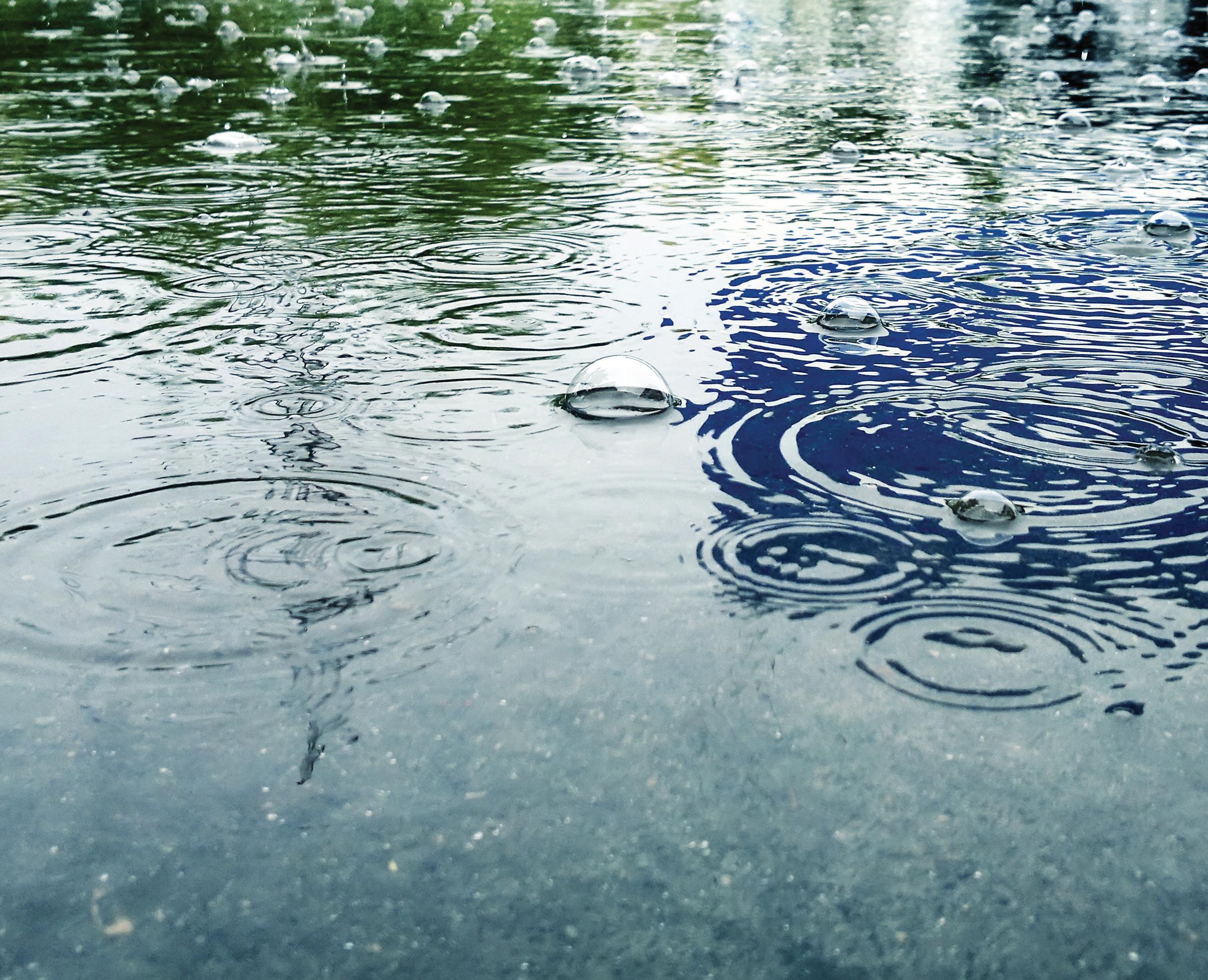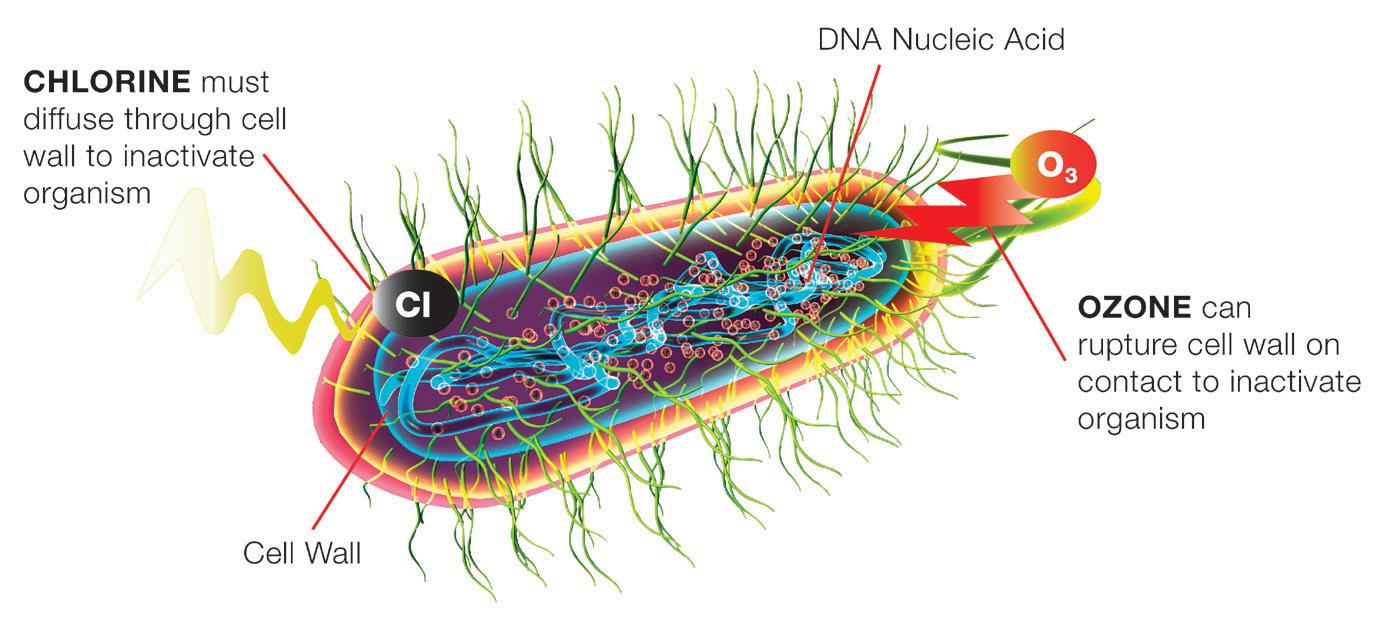
3 minute read
STORMWATER Ozone’s Next Frontier
Ozone and AOP Could Help Rainwater and Runoff Play a Bigger Role in Reuse
By Jim Lauria
Ozone and rainwater have always had a close connection, as anyone who has smelled the distinctive odor of ozone after a thunderstorm can attest. But the next phase of the ozone/rainwater connection could be at hand as the water purifying power of ozone is harnessed to treat rainwater for reuse.
The need is immediate and growing, thanks to a rising population, urbanization, and a changing climate. Many parts of the world are experiencing increasing variability in rainfall, flashier storms, and greater water demand. At the same time, the vast spread of impermeable surfaces – including roads, parking lots and roofs – require stormwater to be captured, stored, moved, and used elsewhere. It is no longer enough, or even possible, in many areas to simply let rain soak into the ground. Today, storms become floods more quickly than ever, and we must actively control and manage stormwater to avoid overwhelming damaged watersheds. We must also be cognizant that the surfaces from which we harvest rainwater, or the roiling floods we seek to control, contribute pollutants to their systems. As we take on the responsibility for managing stormwater, ozone and aeration will become an ever-larger part of water reuse.
Ozone, or O3 – a radical containing three oxygen atoms rather than the usual, stable two-atom form that we breathe – is extremely reactive. Its third oxygen atom is extremely prone to jumping off the ozone formation to join another molecule, often cleaving the target molecule to make the reaction. The result is oxidation, a process that can burst microbes, destroy biofilm, and neutralize taste and odor compounds instantly. In fact, ozone is second only to fluorine for oxidation potential, and is significantly more reactive than hydrogen peroxide and chlorine. Contact time is negligible, and excess ozone returns quickly to the more stable, environmentally benign O2 form in moments.
In addition, unlike chemical additives that must be transported and stored carefully, ozone can be produced on-site in a high-energy chamber where liquid oxygen or air are exposed to high voltage. It is truly lightning in a bottle.
Over a Century
Ozone has been used in drinking water treatment since the first commercial installation at a water utility in Nice, France, in 1906. It has proven itself over more than a century around the world in controlling taste and odor compounds, bacteria, viruses, and more. Early ozone treatment systems employed passive diffusion, such as fine bubble emitters in deep contact basins, to transfer low concentrations of ozone into target water. Under the pressure created by the weight of deep water, ozone bubbles can be absorbed into the pool as they float toward the surface.

In recent decades, improvements in ozone generators have dramatically increased ozone concentration, making it more efficient to use the flow of water through venturi injectors to create a vacuum that draws in ozone and mixes it thoroughly with the stream. The result is nearly instant treatment in shallow contactors or even just a few meters of pipeline. Mass transfer efficiencies exceeding
95% are possible through venturi injection systems, minimizing unnecessary ozone generation and energy use, and maximizing the control of pathogens and taste and odor compounds.
Another high-efficiency innovation has also helped bring ozone to the fore: combining ozone with UV disinfection or hydrogen peroxide yields advanced oxidation processes, or AOPs. Ozone can also be paired with biologically active filtration (BAF) systems for multi-layered purification.
Many of the same microbes that present health risks in drinking water – including Giardia, Cryptosporidium, Campylobacter, Rotavirus, and Legionella – are concerns in stormwater, particularly when the water is aerosolized into particles that can be drawn into the lungs. Aerosols can be formed through sprinkler application, water features or aeration jets in retention basins, or even flushing toilets. Exposure to Legionella through aerosolized water is no idle worry – in 2019, more than 130 visitors to a state fair in North Carolina were sickened by Legionella, most likely after they passed by hot tubs on display. Four died. The threat is persistent – the U.S. Centers for Disease Control estimates that Legionella is

Ozone has been used in drinking water treatment since the first commercial installation at a water utility in Nice, France, in 1906. It has proven itself over more than a century around the world in controlling taste and odor compounds, bacteria, viruses, and more.









